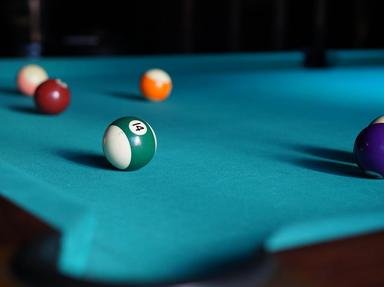Quiz Answer Key and Fun Facts
1. The proper way to "jump" the cue-ball, is to hit under it with your cue, causing it to pop into the air?
2. Which of the following is something you can do with the cueball if you hit it the right way?
3. If you hit a ball hard and at an angle into the rail, it will come off at an identical angle, if measured from the other side?
4. Why do many bars and pool halls make it off-limits for patrons to try the ever-popular "masse" shot?
5. What is a masse shot?
6. Many good players have a special cue just for jump shots?
7. Some top-level players still consider jump shots to be the "lesser player's" way of escaping?
8. Which of the following is normally considered illegal in professional play?
9. A heavier cue will make you break harder?
10. A standard pool table can weigh ________.
Source: Author
arcturiusx
This quiz was reviewed by FunTrivia editor
Nightmare before going online.
Any errors found in FunTrivia content are routinely corrected through our feedback system.
